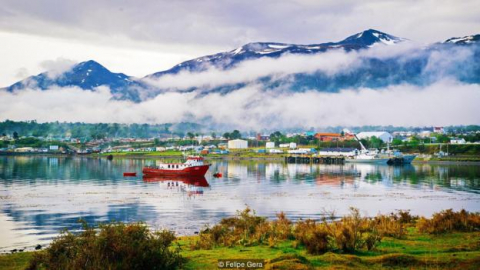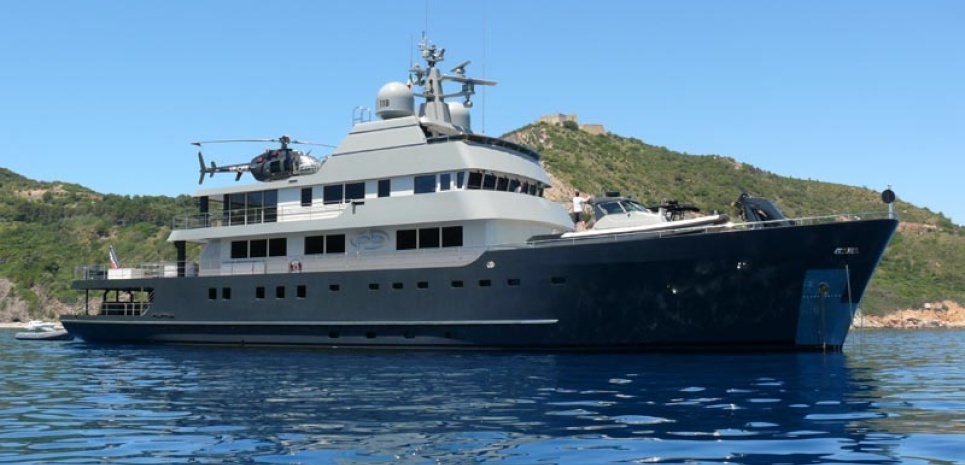Cape Horn Biosphere Reserve is named one of the 2016 Top 100 Sustainable Destinations in the world by Green Destinations
The Cape Horn Biosphere Reserve was named as one of the Top 100 Sustainable Destination in 2016, and its coordinators will be presented with a certificate at the Green Destinations Day Gala on September 27 in the Slovenian capital city, Ljubljana.
The award was launched by the international institutions Green Destinations, Travelmole's VISION on Sustainable Tourism, the Destination Stewardship Center, and QualityCoast to recognize destinations that appreciate and celebrate the authenticity, biodiversity and nature, cultural values within their destination, and strive to promotes and improve conditions for sustainable development for their communities with a view to future generations of citizens and travelers. The Top 100 Sustainable Destination Award, previously conducted in 2014, and is the successor of National Geographic Traveler's Destination Stewardship Surveys, the prestigious rating for travel destinations published between 2004 and 2010.
The team at Omora Ethnobotanical Park with the Sub-Antarctic Biocultural Conservation Program coordinated the University of North Texas in the US, and by the University of Magallanes, Millennium Institute of Ecology and Biodiversity in Chile, led the proposal for, and have coordinated the UNESCO designated Cape Horn Biosphere Reserve since 2005. This important worldwide recognition places the Cape Horn Biosphere Reserve (CHBR) among the company of other well-known recipients globally; in 2014 the recognition was given to Easter Island and Lake Llanquihue in Chile, California's Mono Lake in the US, the Great Wall of China, the Canadian city of Vancouver, and Mount Athos or Holy Mountain in Greece. This award recognizes at a global scale the value of protecting the natural and cultural heritage of the CHBR, and opens an opportunity for its community to further promote and improve sustainable tourism and development for the region.
Organizers of the Top 100 Sustainable Destinations award will officially announce their selections at the 2016 Green Destinations Day Conference to be held from 27-28 September in Ljubljana, Slovenia, Europe's 2016 Green City. There, the 100 destinations will be presented to the international community. Representatives from each of the Top 100 selected destination will form a network for sharing experiences and ideas for sustainable destination management, and plans for 2017, the International Year of Sustainable Tourism Development. In representation of the CHBR, Aldo Rozzi Marin, advisory board member for the CHBR and Honorary Consulate of Chile in Italy, will accept the Top 100 Sustainable Destination Certificate in Ljubljana, Slovenia.
Why the Cape Horn Biosphere Reserve is among the top sustainable destinations on the planet
Floristic inventories conducted by researchers of the Sub-Antarctic Biocultural Conservation Program (SBCP) has revealed that the Cape Horn Biosphere Reserve (CHBR) is a world "hotspot" of bryophyte diversity, with more than 5% of the world's species of mosses and liverworts within less than 0.01% of the Earth's land surface. To conserve and raise awareness about their ecological role and their value for biocultural conservation, researchers at the Omora Ethnobotanical Park (OEP) began to use the metaphor "the Miniature Forests of Cape Horn" to describe these tiny, often overlooked communities of mosses, liverworts, lichens, fungi and invertebrates, and subsequently developed the novel activity, "Ecotourism with a Hand Lens (EHL)" for the CHBR, that will be highlighted at the Green Destinations Day Gala in Ljubljana. EHL welcomes visitors with a magnifying glass in hand to appreciate the small life forms that make the CHBR unique, and in turn, provides an opportunity for local operators to develop tourism that is economically sustainable for the residents of the CHBR, and for the region, the country, and the world.
A Research, Education, and Sustainable Tourism Center for the Cape Horn Biosphere Reserve
The research and education conducted at the Omora Ethnobotanical Park (OEP), such as Ecotourism with a Hand (EHL), are part of the results of the first decade (2005-2015) of the CHBR. For the second decade of management, the Sub-Antarctic Biocultural Conservation Program (SBCP) seeks to promote science, education and sustainable tourism. To this end, in conjunction with local and regional authorities, the design of the building for the Cape Horn Sub-Antarctic Center was approved, and will equip the Cape Horn Biosphere Reserve with first class facilities for conducting biocultural conservation research, the reception of tourists, and will host the world's southernmost Technical Training Center, which will focus on sustainable tourism.
In the context of the recognition of CHBR as 2016 Top 100 Sustainable Destination, SBCP director, Dr. Ricardo Rozzi said:
Being a world-class sustainable tourism destination offers Cape Horn a precious opportunity for achieving economic, social, and environmental sustainability. This integrated sustainability is precisely the concept and aim of biosphere reserves, inserted in the Man Biosphere Program of UNESCO. Cape Horn is biosphere since 2005, and this new recognition as a Top 100 Green Destination will strengthen this path. Toward this aim, the Sub-Antarctic Cape Horn Center that will be inaugurated in Puerto Williams in 2017, will play a critical role. This center that is coordinate by the University of Magallanes in Chile and the University of North Texas in the USA will include a research area, a visitors center, and also a technical education center in sustainable tourism, It will provide content and tourism management tools that deliver to the community for sustainable development of RBCH. Its innovative infrastructure will offer visitors an orientation and scientific knowledge to continue the discovery and appreciation of the unique biodiversity of this privileged territory on the planet.
For now, with a new momentum created by the 2016 Sustainable Destination Top 100, local operators of CHBR continue organizing to provide, and improve sustainable tourism development without endangering its territory, its culture and the various life forms that live there.

Please read the original Spanish article below in PDF format.





